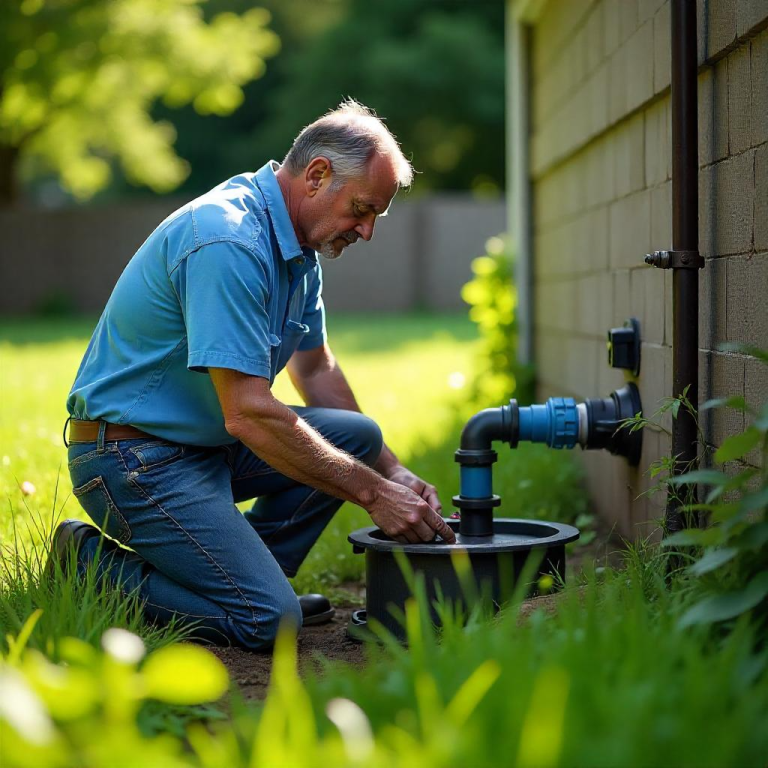Septic Tank Pumping: When, Why, and How Often
Discover why is septic tank pumping important for your health, safety, and property value. Call us if you need help with anything septic!
- Septic tank pumping is essential for maintaining a healthy septic system
- Factors like household size, tank size, and water usage determine pumping frequency
- Regular pumping prevents costly repairs and environmental hazards
Professional septic tank pumping is recommended every 3-5 years
Septic tank pumping is a crucial aspect of maintaining a properly functioning septic system. If you’re a homeowner with a septic tank, it’s essential to understand when, why, and how often you should have your tank pumped.
Regular septic tank pumping helps prevent costly repairs, unpleasant odors, and potential environmental hazards.
What is a Septic Tank?

A septic tank is an underground wastewater treatment system commonly used in areas without centralized sewer systems. It consists of a large, watertight container that collects and treats wastewater from your home’s plumbing system. The tank is designed to separate solids from liquids and allow bacteria to break down organic matter.
Why is Septic Tank Pumping Important?
Over time, sludge and scum accumulate in the septic tank, reducing its capacity to treat wastewater effectively. If left unchecked, this buildup can lead to several problems:
- Clogged pipes: As the sludge and scum layers thicken, they can block the inlet and outlet pipes, causing sewage to back up into your home or yard.
- Drain field failure: When the septic tank is full, untreated wastewater can flow into the drain field, causing it to fail prematurely.
- Environmental contamination: A malfunctioning septic system can release harmful bacteria and nutrients into groundwater and nearby water sources.
Regular septic tank pumping helps prevent these issues by removing the accumulated solids and ensuring the system operates efficiently.
Factors Affecting Pumping Frequency

Several factors influence how often you should have your septic tank pumped:
1. Household Size
The number of people living in your home directly impacts the amount of wastewater generated. Larger households generally require more frequent pumping than smaller ones.
| Household Size | Pumping Frequency |
|---|---|
| 1-2 people | Every 5-7 years |
| 3-4 people | Every 3-4 years |
| 5+ people | Every 1-2 years |
2. Tank Size
The size of your septic tank also plays a role in determining pumping frequency. Larger tanks have a greater capacity to hold waste and require less frequent pumping.
| Tank Size (gallons) | Pumping Frequency |
|---|---|
| 500-750 | Every 2-3 years |
| 1000-1500 | Every 3-5 years |
| 2000+ | Every 5-7 years |
3. Water Usage
Your household’s water usage habits can significantly impact the septic system’s load. Conserving water and fixing leaky fixtures can help extend the time between pumping appointments.
- Install water-saving fixtures like low-flow toilets and showerheads
- Fix leaky faucets and running toilets promptly
- Spread laundry loads throughout the week to avoid overloading the system
Signs Your Septic Tank Needs Pumping

In addition to following a regular pumping schedule, be on the lookout for signs that your septic tank may need immediate attention:
- Slow draining sinks and toilets
- Gurgling sounds in drains
- Sewage odors in or around your home
- Standing water or damp spots in the drain field area
- Lush, green grass growth over the drain field
If you notice any of these signs, contact a professional septic service provider as soon as possible.
How is a Septic Tank Pumped?

Septic tank pumping involves removing the accumulated sludge and scum from the tank using a vacuum truck. The process typically follows these steps:
- Locate the septic tank and uncover the access ports
- Insert a hose into the tank through the access ports
- Use a high-powered vacuum to remove the waste from the tank
- Inspect the tank for any damage or signs of failure
- Replace the access port covers and dispose of the waste at an approved treatment facility
Choosing a Septic Tank Pumping Service

When selecting a septic tank pumping service, consider the following:
- Licensing and certification: Ensure the company is properly licensed and certified to perform septic services in your area.
- Experience: Choose a provider with a proven track record of quality service and customer satisfaction.
- Equipment: Confirm that the company uses modern, well-maintained equipment to ensure efficient and effective pumping.
- Disposal practices: Verify that the provider follows proper waste disposal regulations to protect the environment.
Maintaining Your Septic System Between Pumping

In addition to regular pumping, there are several steps you can take to maintain your septic system’s health:
- Avoid flushing non-biodegradable items like wipes, feminine hygiene products, and cotton swabs
- Use septic-safe toilet paper and cleaning products
- Limit the use of garbage disposals, which can add excess solids to the tank
- Keep vehicles and livestock away from the drain field area
- Schedule regular inspections to catch potential issues early
Conclusion
Septic tank pumping is a vital aspect of maintaining a healthy and efficient septic system. By understanding the factors that influence pumping frequency and recognizing the signs of a full tank, homeowners can prevent costly repairs and environmental damage.
Remember to schedule regular pumping with a reputable service provider and take steps to maintain your septic system between appointments. With proper care and maintenance, your septic system can provide reliable wastewater treatment for years to come.
Call us to schedule an appointment or if you need emergency septic services!







